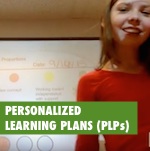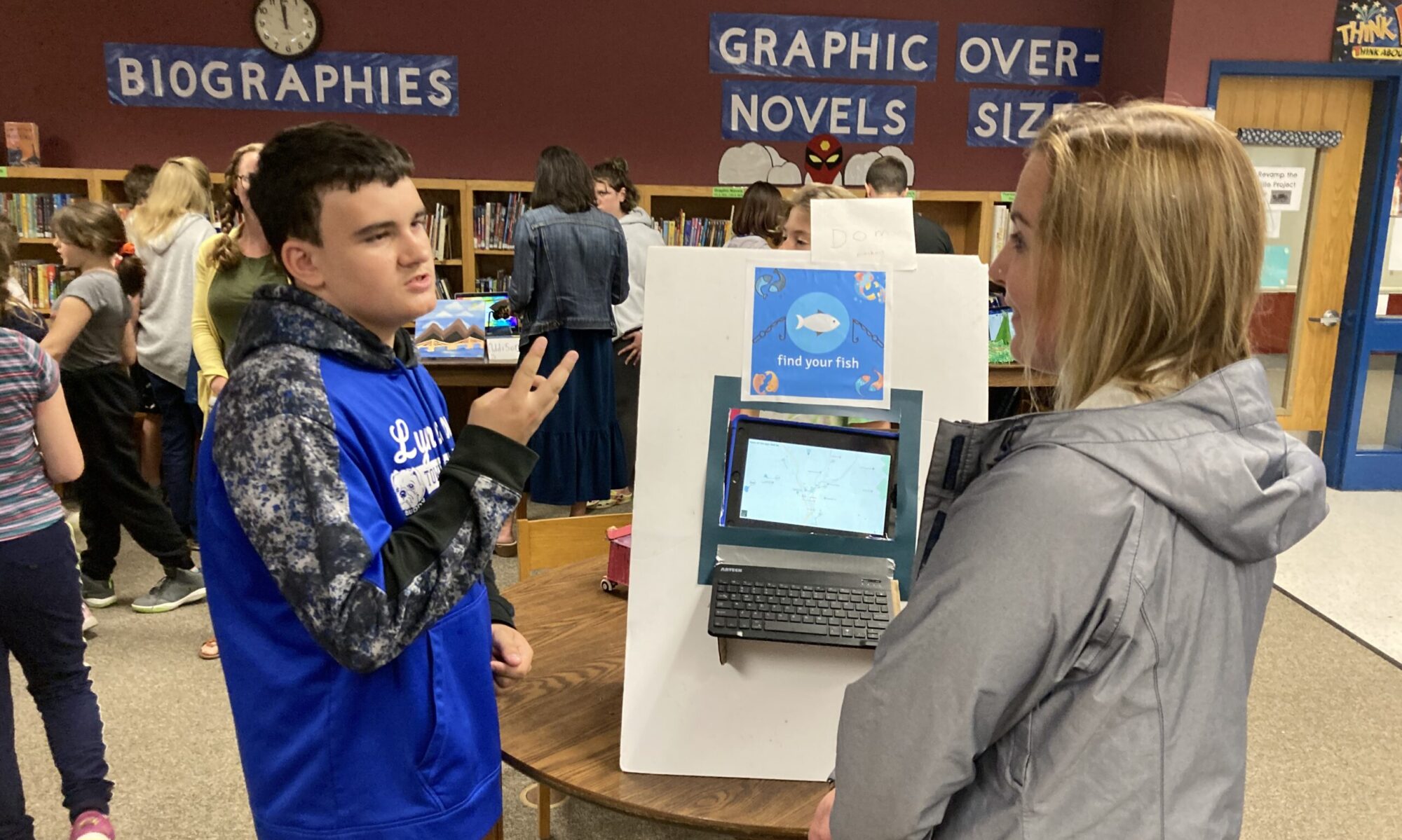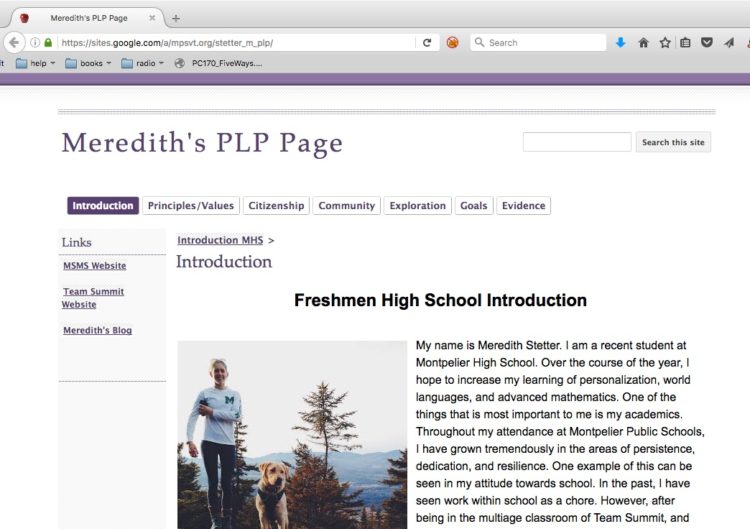Students themselves tell the best stories of their learning
 We wish we could hand you the one right way for students to reflect on their personal learning, on a silver platter. It sure would make the rest of the year a lot easier, right? But there are as many ways for students to reflect on their PLPs as there are students, so the best we can do is show up with these SIX SPECTACULAR STUDENT EXAMPLES.
We wish we could hand you the one right way for students to reflect on their personal learning, on a silver platter. It sure would make the rest of the year a lot easier, right? But there are as many ways for students to reflect on their PLPs as there are students, so the best we can do is show up with these SIX SPECTACULAR STUDENT EXAMPLES.
Roll tape!
1. The Screencast: Gavin’s PLP Tour
It’s a screencast, and it has music and it has Gavin. This 8th grader from Main Street Middle School, in Montpelier VT, created a video tour of the Google Site he’s using to store evidence and artifacts of his personal learning plan.
[screencast no longer available, 6/8/21]
The screencast is quite literally Gavin guiding the viewer through the pages of his PLP Google Site, providing context as to the significance of each page with regards to the team’s PLP process and outlook. There’s a very concrete immediacy to hearing Gavin explain, in his own words, the personal significance of the material and artifacts on each page.
The tour also makes a great artifact showcasing the site for schools that are debating how best to archive and preserve PLP Google Sites.
2. The Slideshow: Linden O’s Bee Garden
Another video reflection, in more of a slideshow format, incorporating photos taken during a project-based learning (PBL) unit on growing a bee garden. This student from Peoples Academy Middle Level addresses specific reflection points about PBL — explaining the driving question, noting transferable skills used, goal-setting, explaining the research, — in telling the story of their project.

Note that the slideshow incorporates stock photos and screenshots from the student’s digital portfolio as well. And the background music is a nice touch.
3. The Student-Led Conference Prep: Lou’s PLP

Lou, a 5th grader at The Dorset School in Dorset, VT, made this screencast (using Screencastomatic) in preparation for leading her student-led conference. Preparing a screencast that shows the particular elements of Lou’s learning that she’s most proud of provides a structure for the student-led conference.
Lou talks about her goals, how she met them and how they changed, using photos taken at school and screenshots, but the text notations are also super-useful in providing over-arching context as to the main idea of each of Lou’s goals.
Btw, all these screencast look amazing sent out to relatives in holiday e-cards. Just saying.
4. The Website: Meredith’s PLP Website
Back to Main Street Middle School we go! And with good reason, as Meredith Stetter, a student there, has been meticulously documenting her PLP in this comprehensive website. Built as a Google Site (sense a theme here), the website contains a wealth of reflections written in response to prompts set out by the school.
Not all of Stettler’s website is publicly viewable, a deliberate choice, and one that likely informs a number of school decisions around digital portfolio choice.
5. The Adobe Spark: Fayston Stories
With the proliferation of iPads available to students, the student reflection process has grown easier and more ubiquitous. We’ve talked before at length about how much we like Adobe Spark (née Adobe Voice) and how useful they are in telling student PLP stories. Fayston Elementary School, in Fayston VT, has made the free iOs app available to students to help them reflect on their PLPs, specifically how those PLPs address Vermont’s Transferable Skills.
A great tool especially for younger students to create voiced-over slideshows showcasing their PLPs. Adobe Spark also provides a library of in-app background music and icons, and have the bonus of not needing to be hosted anywhere online to still be available.
6. The Documentary Movie: Gus the Goat Farmer
We’ve seen a lot of video reflections in this collection, and with good reason. Video is everywhere and lots of students really like creating with it. The availability of hand-held mobile devices and the improvement in their cameras also means a lot more moviemaking outside the classroom.
Like, for instance, on a goat farm.

Gus Linnebur, a student at Randolph Union High School, in Randolph VT, got together with some friends to make a quick (3 minutes! Zippy!) documentary about his personal learning plan, which involved work-based learning at a local goat farm. A documentary like this is a great way to practice collaborative film-making, and is uniquely suited for personal learning plans that involve leaving the classroom or school.
Who doesn’t want to document amazing opportunities such as taking a lab course at the local university or serving on the Vermont Works for Women Youth Advisory Council?
What are some of the ways your students tell the story of their learning?
Now, what are some of the ways your students COULD tell the story of their learning?


